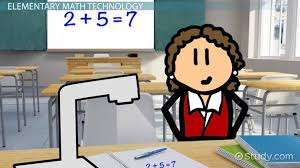
Techify Your Trig: A Comprehensive Guide to Engaging Math with Technology

Incorporating Technology in Math Lessons: A Comprehensive Guide
In the 21st century, the process of teaching and learning has experienced significant changes due to the application of technology. This is particularly true in the field of mathematics, where technology has become a commonplace tool in many classrooms. This article explores various ways to effectively incorporate technology in math lessons.
Benefits of Using Technology in Math Lessons
Technology in math classrooms leads to effective learning sessions, keeps students actively engaged, and allows for differentiated instruction. It also broadens the learning climate and prepares students for a future where most jobs require the use of technology. Research indicates that students are able to learn more mathematics more deeply with the use of technology.
Ways to Incorporate Technology in Math Lessons
- Use of Math Applications: Different math applications can be interlinked with your online classroom. This integration of technology with the classic classroom model has revolutionized the way math is taught and learned.
- Create Learning Booths: One innovative way to infuse technology in math classrooms is to create learning booths. This approach helps students embrace technology and understand how to use it best for math classes.
- Bring in New Facilitators: With technology, it’s easy to bring in various experts and conduct live sessions for your students. This exposes students to an entirely new set of ideas and teaches them different ways to approach a particular problem.
- Use of Math Teaching Apps: Apps like SplashLearn provide a visually engaging platform for kids to learn about math concepts in a fun-filled way. These apps cover a wide range of topics and facilitate both in-class teaching and homework.
- Use of Interactive Whiteboards or Projectors: These tools can make math more engaging. Students are generally more excited to dive into a visually appealing and interactive program than a traditional textbook.
- Use of Graphing Calculators and Virtual Manipulatives: These tools have been shown to help students improve both their understanding of math concepts and their problem-solving skills.
- Use of Learning Analytics: Online teaching tools can take care of the most repetitive functions of your job so you can save time and focus more on teaching.
- Use of Multimedia: Multimedia brings learning to life. Videos, animations, and interesting movies can be integrated into the math learning process, which can highly motivate and engage students.
- Use of Digital Mathematical Technologies: These include function geometry packages and CAS (Computer Algebra Systems). They can be used for communication, documentation, and presentation across different subjects.
- Use of Math Tools and Apps: Tools like GeoGebra, a dynamic mathematical software program, can be used in the classroom to make math interactive and fun.
Conclusion
Incorporating technology in math lessons can be a game-changer for many teachers. It can ensure better concept explanation, greater student engagement, more student practice sessions, and also track individual student progress. However, even with the most sophisticated technology in place, significant enhancement in teaching and learning cannot be realized if teachers are not adequately prepared. Therefore, it’s crucial for teachers to be adequately trained to use these technologies effectively in their classrooms.